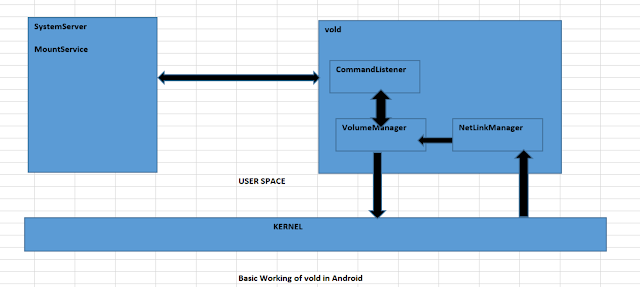Android External Storage Support: Mount Service Architecture

Introduction. We have already seen in the previous tutorial that the vold service talks to the MountService which is responsible for actually initiating commands from the userspace to mount,unmount,create,remove different volumes. Let us spend sometime to understand more on this. The relationship between the command message, MountService, Vold, and Kernel is shown in the following figure. Vold receives the kernel uevent message through the Netlink messages and sends them to the MountService through the socket method and receives the MountService commands in real time. We have seen earlier that vold process 1. CommandListener module creates a socket listener thread at startup. 2. The thread is used to listen to MountServcie's connection and receives the command message sent by the MountService to Vold. The MountService needs to receive the uevent message from the kernel. It must also create a socket monitor thread. The sock
